How to Clean and Re-Season a Cast Iron Skillet
on Apr 04, 2013, Updated Apr 03, 2024
This post may contain affiliate links. Please read our disclosure policy.
If you’re new to this age-old cookware, you will need to know how to clean cast iron, as well as how to season it. Some people may initially feel intimidated by the care and maintenance of cast iron, but with a little know-how and technique, cleaning and maintaining your cast iron cookware can be incredibly simple and rewarding.
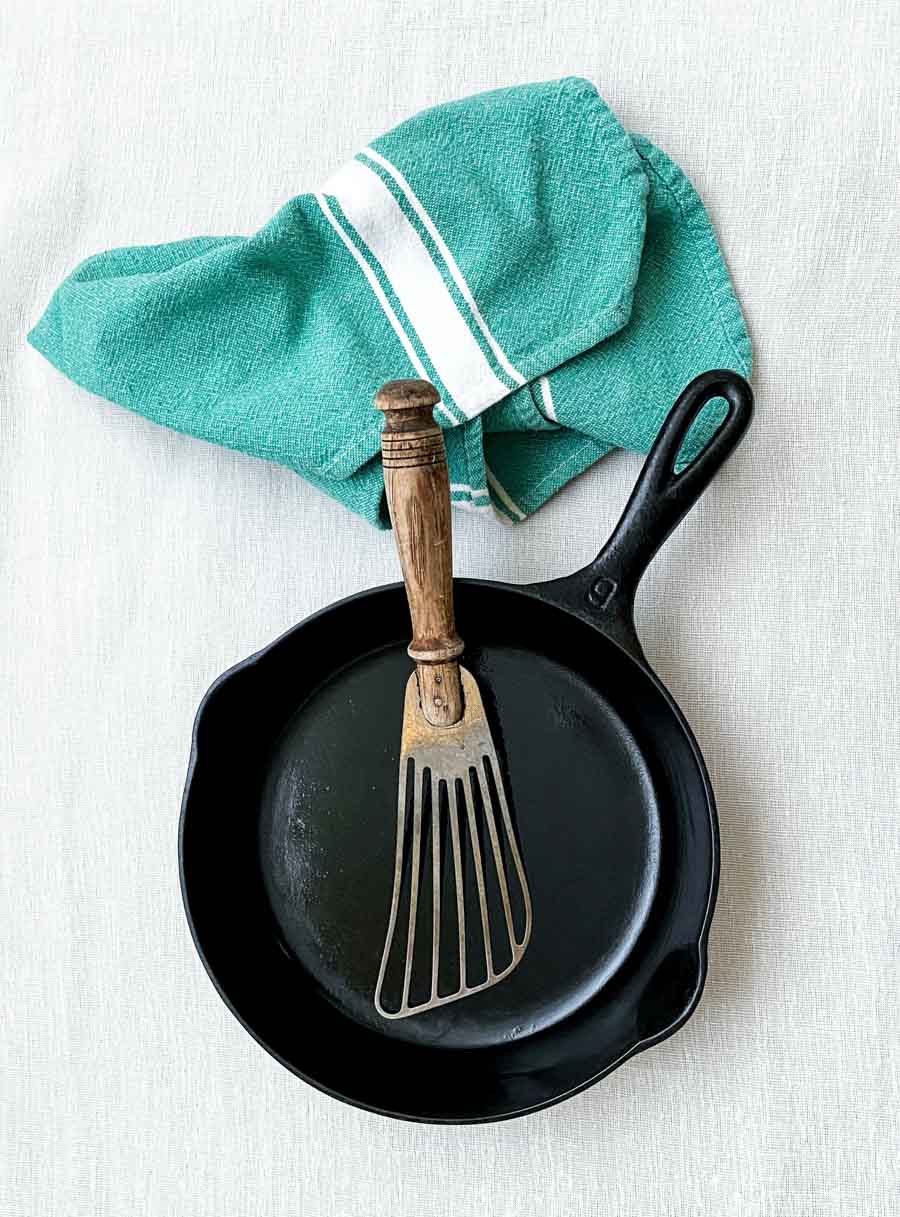
Cooking with cast iron is making a comeback and with good reason. Cast iron skillets and Dutch ovens are extremely versatile cookware that boasts a wide range of amazing advantages over stainless steel, copper, and other varieties of pots and pans.
Cast iron, made from a molten mixture of iron and steel, has unique properties that make it visually appealing, naturally non-stick, and extremely durable. It’s no wonder chefs worldwide are again turning to this traditional cookware.
Table of Contents
Why You’ll Love Cooking With Cast Iron
- Nonstick surface
- Safer and healthier material
- Durable and indestructible
- Easy to clean and maintain
- Versatile uses for cooking
Properly Seasoned Cast Iron is Naturally Nonstick
This classic cookware is a great choice for household use due to its nonstick nature, perfect for making Saturday morning blueberry pancakes.
Unlike other cooking materials, cast iron is porous. When heated, these pores expand, allowing cooking oil, fat, or lard to penetrate the pan’s surface, where it is cooked into the cast iron surface.
This coating accumulates every time you cook and helps to form the seasoning on the cast iron, which makes a nonstick surface. Cooking bacon in cast iron is an excellent and delicious way to keep the pan seasoned.
Just keep cooking in the pan, and it will become more nonstick as it ages and is used.
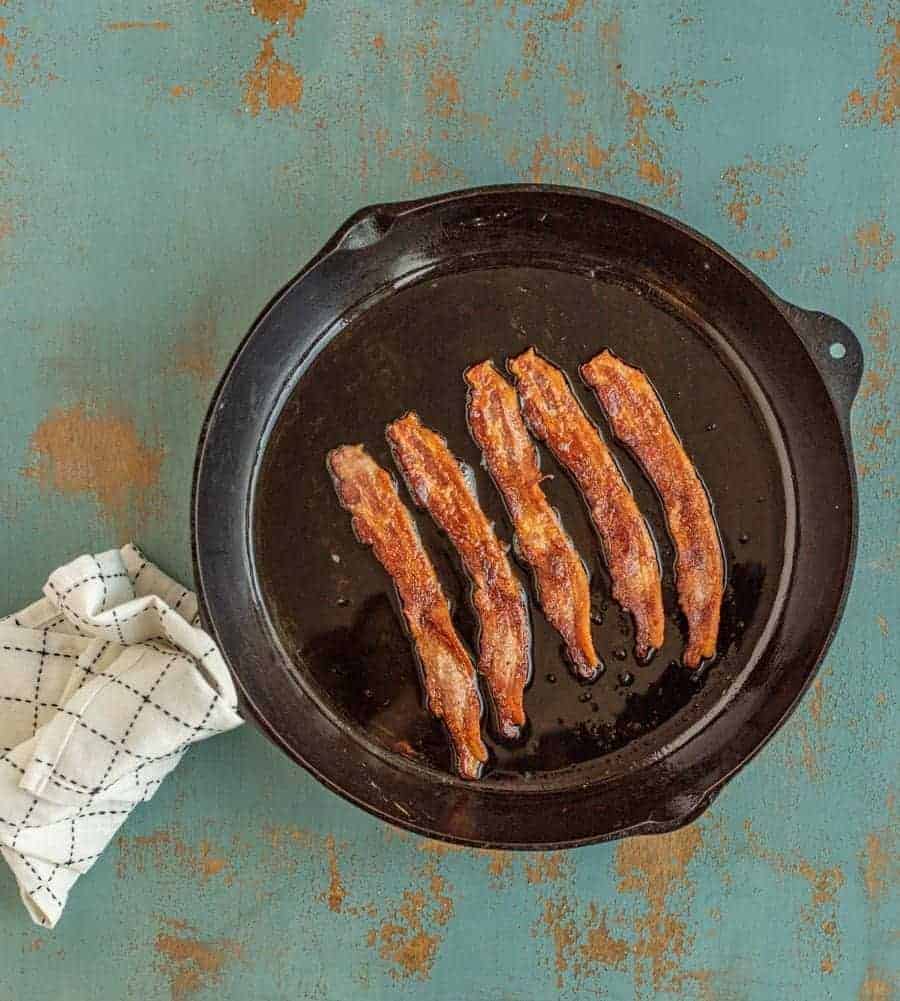
Cast Iron is Safer and Healthier
By maintaining properly seasoned cast iron cookware, you will no longer need to purchase conventional nonstick pans, which are made of questionable materials.
Conventional nonstick cookware often contains Teflon, which can be hazardous to humans. Studies have linked Teflon-coated pans to an increased risk of some types of cancer, changes in liver enzymes, increased blood cholesterol levels, and other issues.
Teflon also poses some environmental risks, is hazardous to birds, and should be avoided in any home with pet birds.
Cast iron, on the other hand, does not pose these risks and is a much safer alternative.
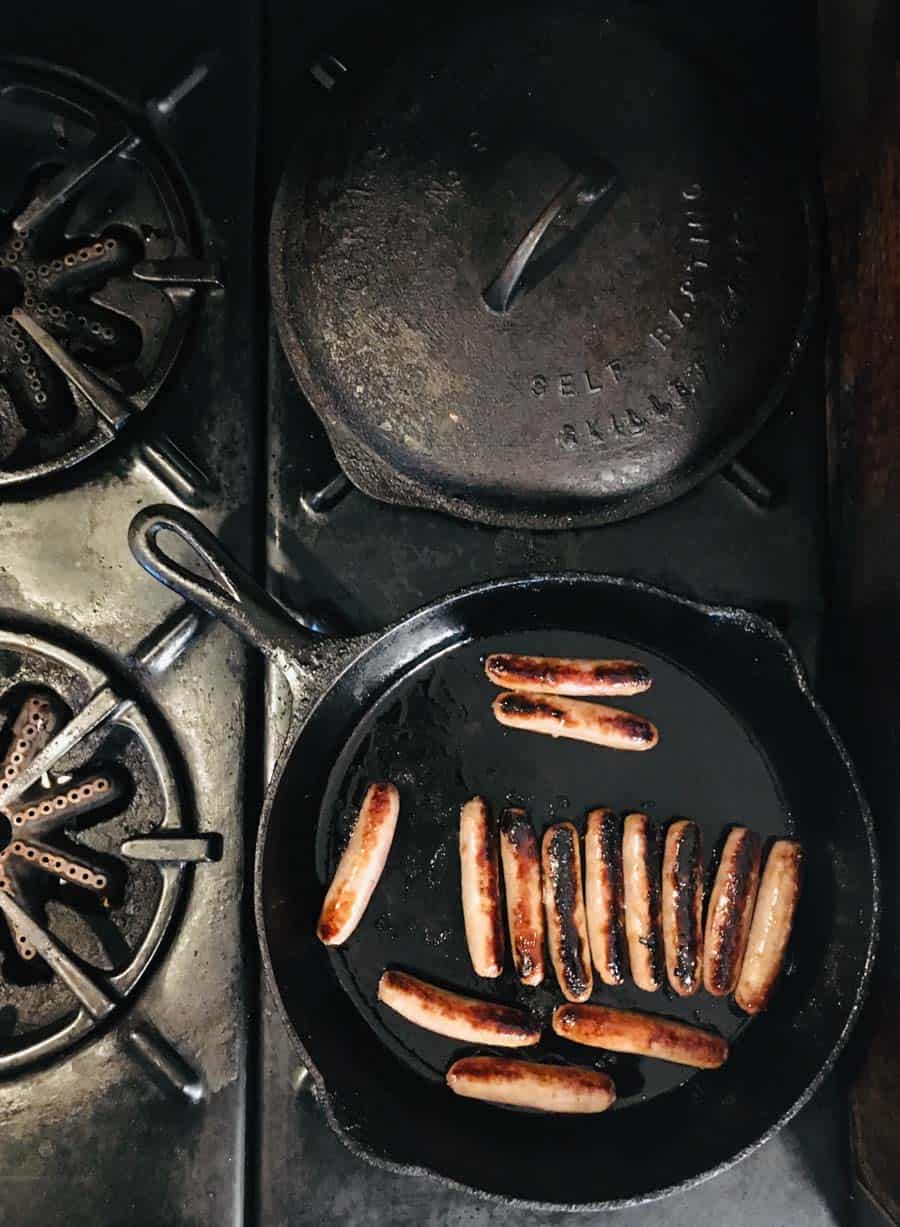
Durable and Nearly Indestructible
Cast iron is a heavy and resilient material that can withstand a surprising amount of wear and tear. Its heavy nature not only helps it cook evenly, but it almost guarantees that cookware will not have regular issues, like scratching, flaking, or handles falling off.
While many first-time users may feel intimidated by it at first, particularly when pans rust, even a very rusted pan can be rehabilitated and look as good as new with a little know-how.
Because cast iron is such a durable material, many cast iron pans can last several lifetimes, becoming family heirlooms passed down from generation to generation.
Though cast iron is quite durable, it can be sensitive to temperature shocks. When cleaning hot pans, only wash them in warm water. Cold water can shock your pan causing it to crack.
Cast Iron is Simple and Easy to Clean and Maintain
Although they may look a little different, cleaning and maintaining cast iron cookware is not that much different than the maintenance required for stainless steel pots and pans.
By knowing how to clean cast iron, maintain the seasoning, and which cleaning tools work best, you’ll have your cast iron looking great and cooking delicious recipes like old-fashioned cornbread in no time.
Cast Iron Pans are Incredibly Versatile.
Cast iron’s unique properties make it one of the best cooking materials. Not only is it naturally nonstick, but it also maintains an even cooking temperature and retains heat longer.
Cast iron skillets are great for sauteing and frying, but they can also be used for broiling, baking, and much more. We use our cast iron pans to cook any number of amazing foods every single day!
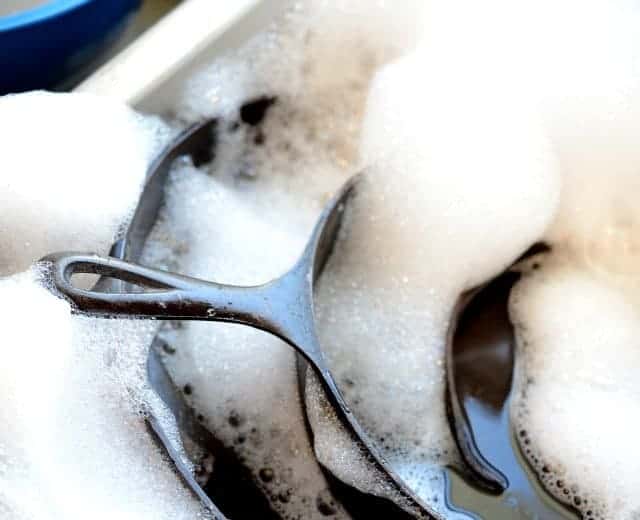
How to Clean Cast Iron
Keeping cast iron pans clean is simple and even gets easier the more seasoned the pans become over time and with frequent use. Here are some best tips for cleaning cast iron cookware.
General Cleaning of Cast Iron
Clean the pan immediately after use by simply wiping the surface clean with a moist paper towel or washcloth. Thoroughly dry the pan right away to prevent rust.
If a small amount of dark residue wipes off your pan during cleaning, it is just excess seasoning and is perfectly normal.
Cleaning Dirtier Cast Iron Pans
If food gets stuck in the pan, you will need to take care not to remove your pan’s seasoning during cleaning. This is more likely to happen when the pans are newer or have recently been deep-cleaned. The cookware simply needs to rebuild or form a deep seasoning to make its surface truly nonstick.
It’s important not to use copper scrubbers or steel wool, as these can be too abrasive and remove seasoning. Instead, opt for chainmail scrubbers, pan scrapers, or cast iron scrub brushes, which will be gentler on your pan’s seasoning.
Though it may be tempting for stuck-on messes, never soak your cast iron in water. This will help prevent the pan from rusting.
Gently scrub with hot water. While it is a commonly held belief that you should not use soap on your cast iron, a small amount of soap will not affect the seasoning and will make cleaning greasy pans easier.
If you’re using dish soap, only use a drop or two and thoroughly rinse the pan. Too much dish soap can destroy your pan’s seasoning, so a little goes a long way. After cleaning, thoroughly dry the pan.
For super stuck-on food, fill the pan with water and lightly simmer for three to five minutes, allowing the pan to cool before cleaning with a scrubber as above.
Regular Maintenance and Care for Cast Iron
When properly maintained, cast iron is simple to use and clean and will not need to be re-seasoned frequently. The trick to keeping cast iron in tip-top shape is to use gentle cleaning techniques and keep your pan dry.
From time to time, if your pan starts to look dry or dull or food seems to be sticking, rub a bit of vegetable oil on your pan when it is still warm to maintain your pan’s seasoning.
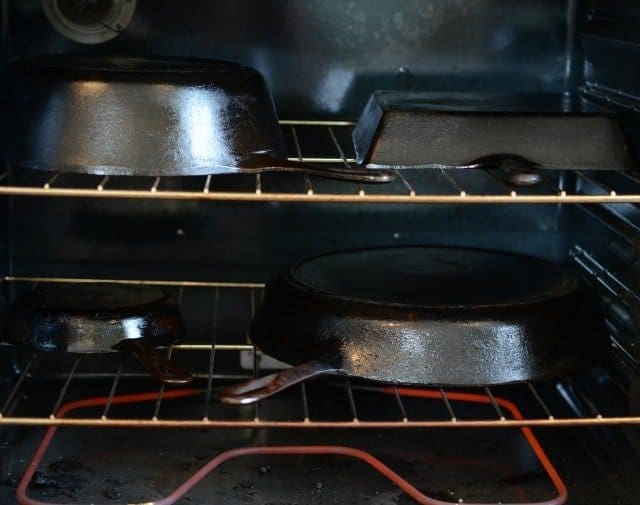
How to Refurbish and Season a Cast Iron Pan
Old, dull, and rusty cast iron pieces may look daunting at first, but they are simple to refurbish when you know what you’re doing, and you can save a lot of money by purchasing cast iron secondhand.
Refurbish Cast Iron With a Deep Clean
Often, old cast iron will have spots of rust or old, cooked-on oil that has turned rancid over time and needs to be removed. If your pan has begun to rust, smell, or have sticky areas of cooked-on oil, it’s time for a deeper clean.
The only time you should use copper scrubbers or steel wool on your cast iron is when you are doing a deep clean. After wetting your pan, thoroughly scrub it inside and out with your scrubbers until all rust and other cooking residue is removed.
If needed, you can use dish soap during this process because you will be re-seasoning your pan next.
How to Re-Season Cast Iron Pans
After your cast iron is thoroughly cleaned, it’s time to re-season it.
Preheat oven to 325° F. Next, using a paper towel, evenly coat the pan with a light layer of vegetable oil; your pan should be coated but not dripping with oil.
Place the pan upside down in the oven and cook for one hour. This will allow the seasoning to bake into the cast iron, forming a natural, nonstick coating. This process can get messy, so you may want to place aluminum foil under the pan to catch any drippings.
Be sure to turn on the stove vent to limit any smoking!
After one hour, turn off the oven and allow the pan to cool completely before removing. Your old cast iron pan is now re-seasoned and ready to use!
To maintain the seasoning, simply follow the general care instructions above to keep your cast iron looking great for years to come.
For small amounts of rust, you likely won’t need to completely re-season a pan. Scour any rusted areas to remove rust and then reapply a thin layer of vegetable oil.
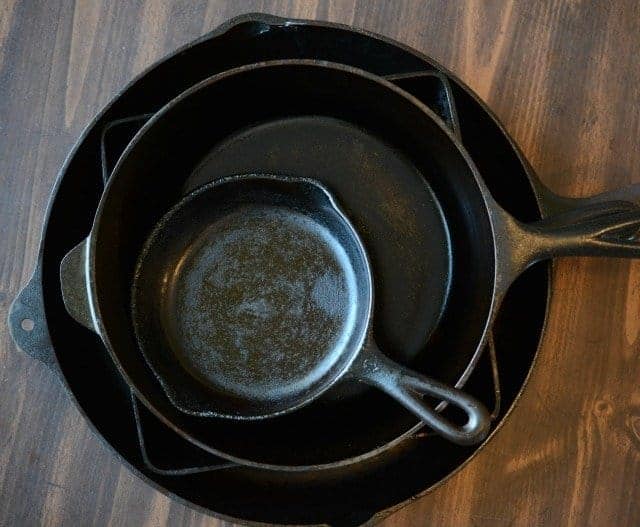
Getting Started With a Brand New Cast Iron Skillet
While there is a lot to be said for buying cast iron secondhand, there is a lot of great cast iron cookware on the market today. Sometimes it can be difficult to find used cast iron at secondhand stores and the like, so at times, buying new may be the only option.
If you’re starting your cast iron journey with a new piece, your pan will likely be coated in an anti-rust wax from the manufacturer. Just as if you were working with a rusty pan, thoroughly scrub the new cast iron with a chainmail scrubber or cast iron scrub brush until the wax is removed. Next, follow the steps above to season your pan with vegetable oil before use.
Cast Iron FAQs
Likely never! Cast iron can last decades, if not lifetimes. Improper cleaning, however, can damage cast iron over time. If your skillet develops a crack or begins to corrode with holes, it’s time to replace it.
No, putting cast iron pans in the dishwasher is not recommended. Doing so will promote rusting. Hand washing with hot water and minimal soap, if necessary, is the best way to clean a cast iron pan. Additionally, make sure to dry it thoroughly after washing to prevent rust.
A drop or two of dish soap can be used to cut grease when cleaning cast iron pans. For a deep clean prior to re-seasoning, it’s okay to use soap since the pan will be going through the seasoning process again.

Expert Tips for Cooking With and Keeping Cast Iron Pans
- While cast iron can cook most dishes, highly acidic foods, such as wine and tomatoes, can react with cast iron pans causing metallic flavors to leach into the food. If cooking acidic foods, make sure the pan is well-seasoned and try to keep cooking times short. Once you’re done cooking, remove all food from the pan as soon as possible.
- To ensure food doesn’t stick to the pan, warm it before adding cooking oil or butter. Once the oil is heated, add the food, and it will be much less likely to stick.
- For proper storage, keep cast iron pans in a dry place, and store them with their lids in place if possible.
More Cast Iron Recipes!
Chocolate Chip Cookies
Gooey Cast Iron Chocolate Chip Cookies
Pancake Recipes
Stack ‘Em High: Golden Cornbread Pancakes
From Scratch Recipes
Lemon Pepper Chicken
Breakfast Recipes
Corned Beef Hash
Did you try this project? Share it on Instagram, Facebook, and Pinterest!
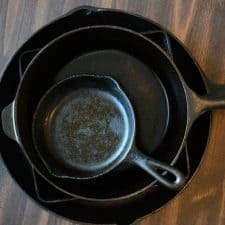
How to Clean and Re-Season a Cast Iron Skillet
Equipment
Ingredients
- Cast iron skillet or other cookware pieces
- Scrubby
- Soap and water
- Vegetable oil
Instructions
- Get your hands on some beautiful cast iron pieces.
- Wash them in hot soapy water. If they are rusty or coarse, use a copper scrubber or steel wool to really scrub them. You can scrub inside and out. The goal is to remove any old oil, sticky spots, or general "crud". Don't fear the scrub or the soap. This is a one-time deep clean.
- Rinse very well and then pat dry with a dish towel or paper towels.
- Evenly coat the inside and outside of the pan with vegetable oil using a paper towel. This is just a light layer, no need to put it on thick. It should be darker in color but not dripping with oil.
- Preheat your oven to 325 degrees F. and place the pan upside down in the hot oven. You can line the bottom of the oven with foil to catch any oil drips if you like. Let the pan bake for one hour. Expect it to be pretty smoky 🙂 After one hour, turn off the oven and let the pan stay in the warm oven until it has cooled (that will take a few hours).
- Your cast iron is now clean, seasoned and ready to use.
Notes
- When cooking with your cast iron skillet, it’s best to warm the skillet and then add a layer of fat to the pan before adding your food. This helps things like eggs not to stick.
- When you are cleaning cast iron moving forward, if it’s not too dirty, just wipe it out with a paper towel or a damp cloth.
- If it’s quite dirty or things are stuck to it, wash it in hot water and use a stainless steel chainmail scrubber. This is a lifesaver for cast iron, and I use mine all the time. The chainmail scrubs but doesn’t scratch.
- You can reoil your cast iron as needed. If it looks a little dull, add a light layer of oil to the inside and outside and spread it around with a paper towel. There is no need to heat it again in the oven.

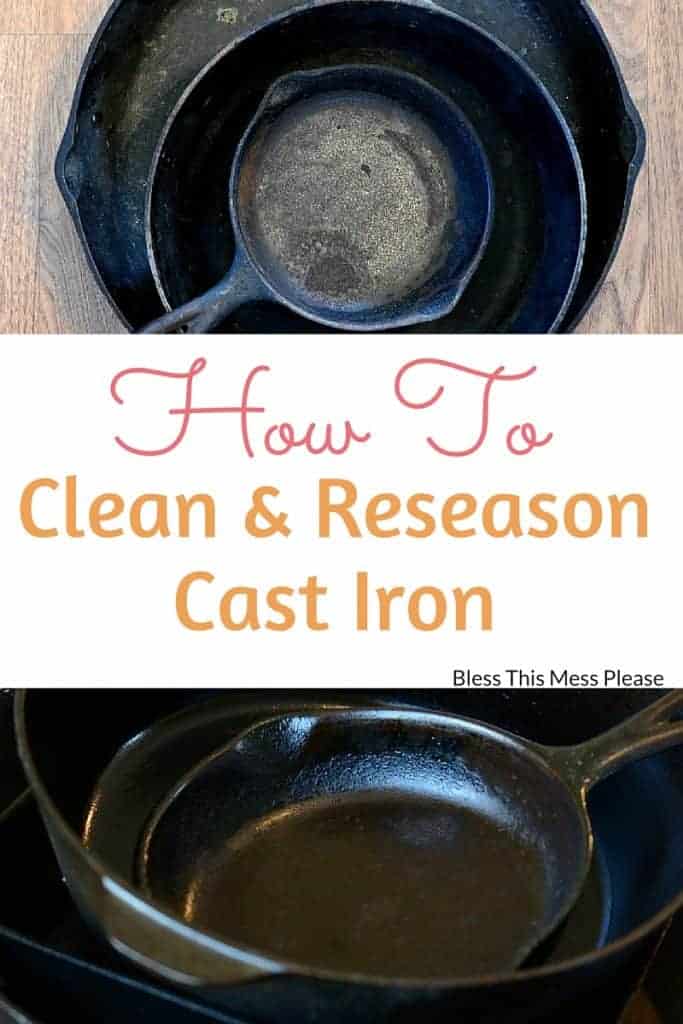
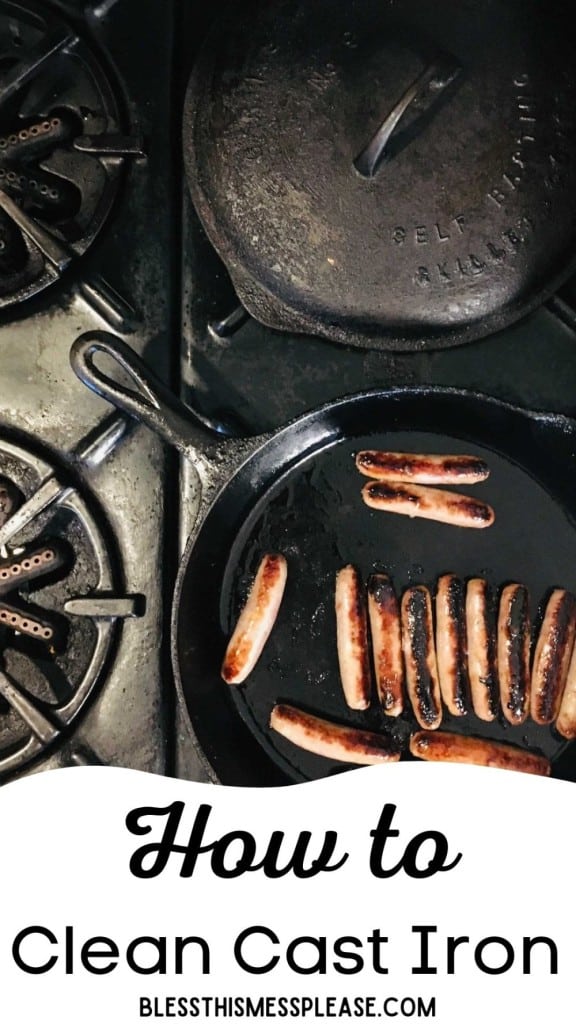
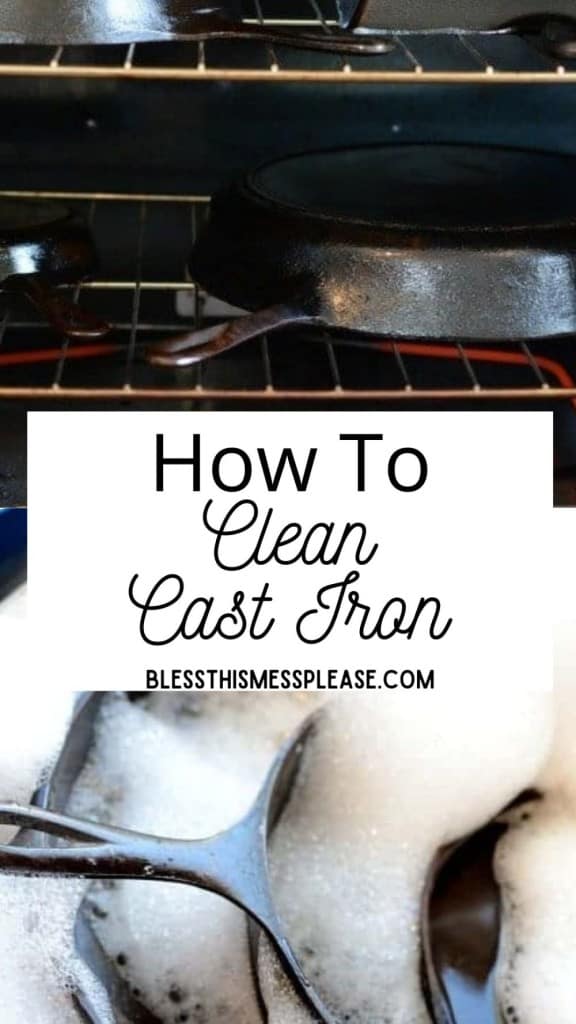

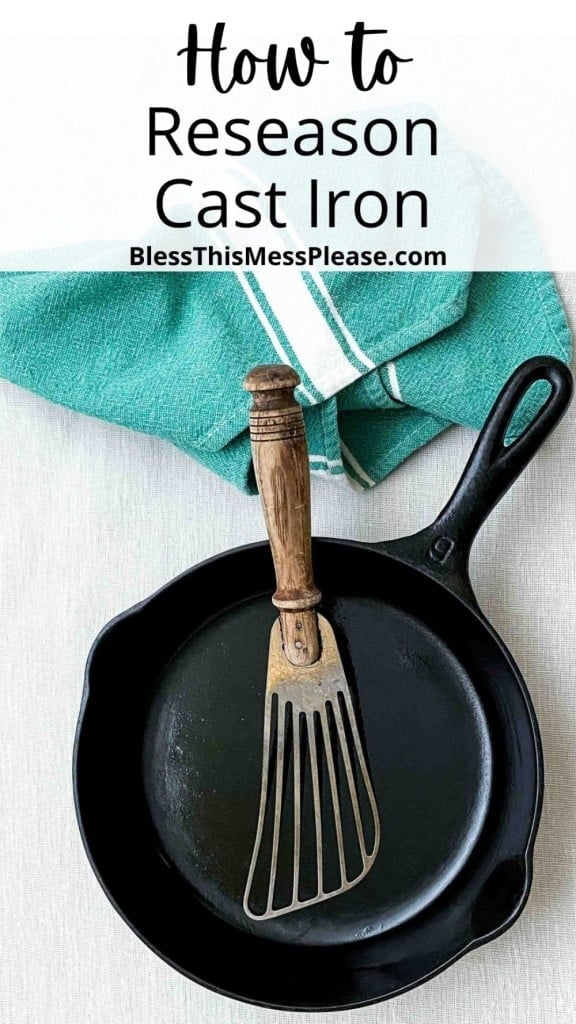

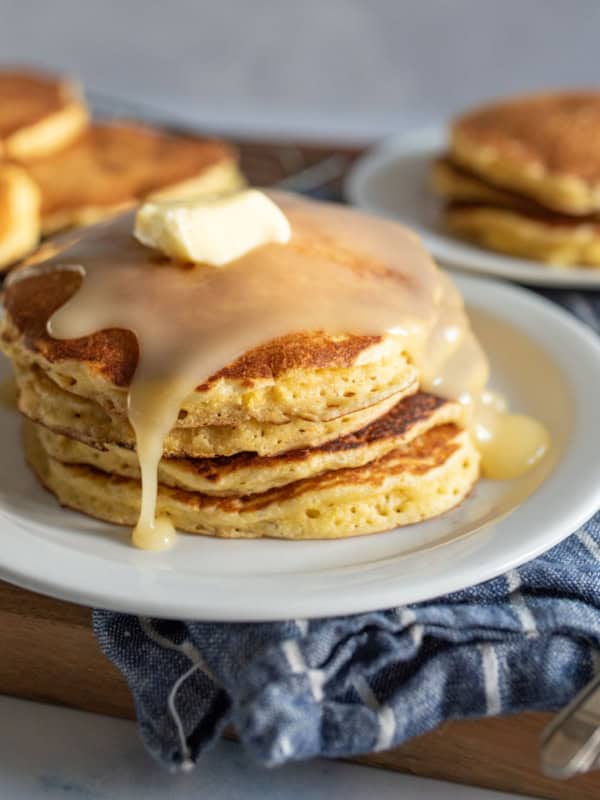
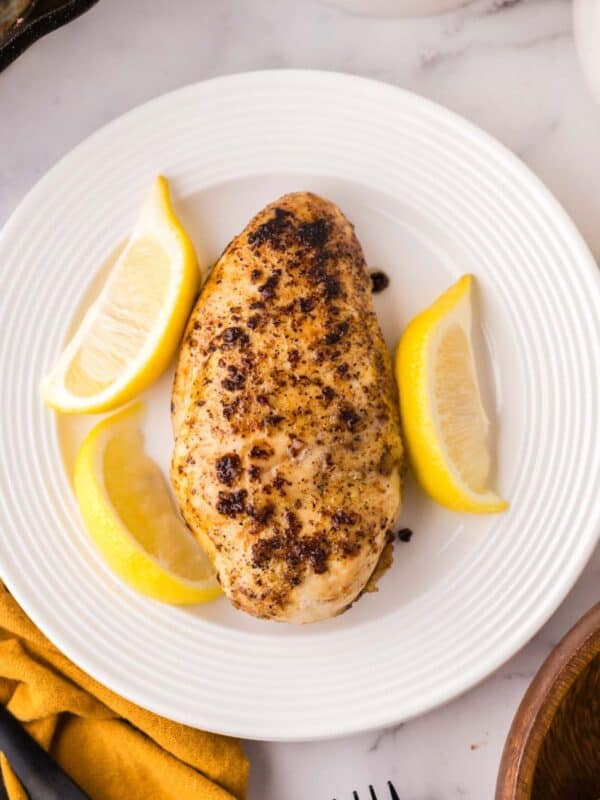
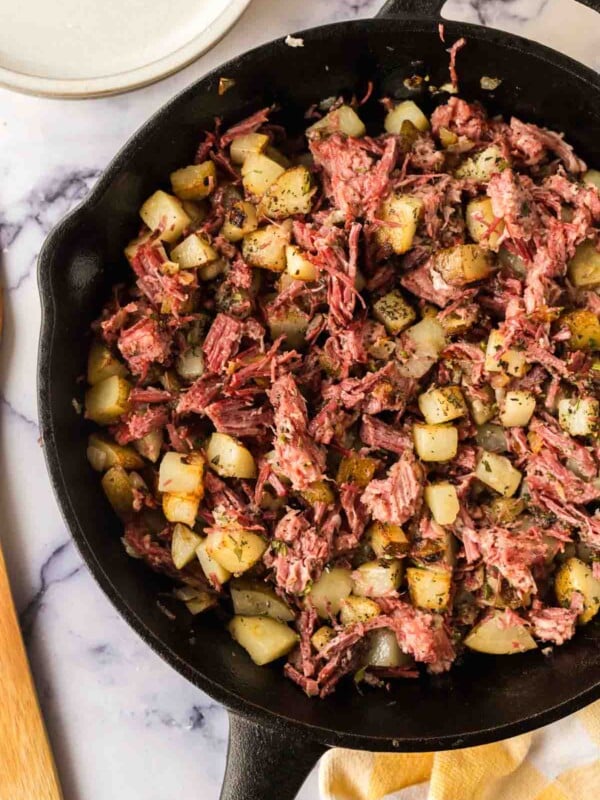






Hi – 2 quick question(s)……can I use: Grapeseed Oil? (to coat pan) & second, can I do the same treatment to my cast iron “lid” that goes with my cast iron frying pan? I absolutely loved this article! I knew there was a better way – so simple and broken down, I can’t Thank you enough!
Grapeseed oil has a really high smoking point, I’m sure that you could use it, and yep, do it too the lid too! I’m so glad you have a lid, that’s so cool!
I never use soap on my cast iron. I spray it with a vinegar solution. Heat the cookware and use the plastic scraper, the food will come off. Wipe with paper towel. I then coat with avocado oil. Vinegar water is a disinfectant if I am not mistaken
Your pans look great. I LOVE cast iron. I also hope to acquire more. Mine go from stove top to oven and even put to the grill. In fact my grill and my atovetop have cast iron grates.
I clean mine while they are still warm with salt and palm oil. The salt does all the scrubbing. Just rinse with hot water and dry on the stove top or oven. #perfection
That post is a little old, I have quite the collection now and it seems to always be growing! It’s all that I use now and love it. Thanks for the salt tip… I’m going to try that!
You Missed The fact that iroN cookware kept the folks on the frontier From becoming Anemic. Iron Cookware Is healthier For that Reason. If your Iron is correctly seasoned, no soap is ever needed.
I must agree there the best pans for frying n I also knew about the cleaning n oiling process.
I was told to never use soap on my cast iron skillet…..
If you are trying to get rid of old rancid oil before reseasoning it works great! I don’t use any for cleaning cast iron that’s in good condition…
Your right! We never ever use soap on cast iron. It ruins the pan and th work get it back to its natural non stick surface will take much longer than a single baking session in the oven. My husband restores cast iron pots and pans using a simple electrolis bathe to remove all rust and any crust then reseasons them properly by rubbing carefully with a thin layer of good oil followed by baking overnight. Our cast iron is non stick and beautiful.
Great tips and spot on! We have also put old rusty, crusty cast iron pans in an open fire outside. We retrieved them in the morning after they had cooled, then washed, oiled and baked them. The fire really helped clean them up.
coconut oil okay?
i hate my cast iron skillet, its heavy and sticky and greasy and sticks
but im trying
I’m not sure how the coconut oil will do… I think it has a lower smoking point than what I recommended, but do a little research and see what it says! You will LOVE your cast iron if you get it ready and start using it!
I don’t think coconut oil has a high enough heat to work. Try the flax seed or peanut, oil any night heat oil not olive oil it won’t work either
We season ours in the bbq grill so we don’t have to hear the smoke alarms. Your cast iron came to you in fairly good condition, I got some that was covered (and I mean covered and caked!) in rust. I used lime-a-way to get the rust off, then used steel wool, etc, like you did.
Just a funny: Tim came home from school one day to a house full of smoke. He asked, “Whatcha smokin’ mom?” My reply, “Pot”.
I’m just an old fashioned purist. When we find/purchase/are gifted older cast iron we scrub the seasoning completely off. We don’t use soap and have no idea what it was seasoned with and thus it gets completely refinished. Steel wool to scrub and flaxseed oil to season. The method and reasons behind it are in this article:
https://sherylcanter.com/wordpress/2010/01/a-science-based-technique-for-seasoning-cast-iron/
Such a good article! I love the flax seed oil concept. I hardly use veg oil and I knew there had to be a better way out there. This is a GREAT article. Thanks so much.
Lucky you getting some old family cast iron pans! I really need to toss the last of my non-stick pans and go this route 🙂 Excellent resource!